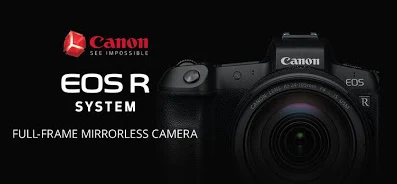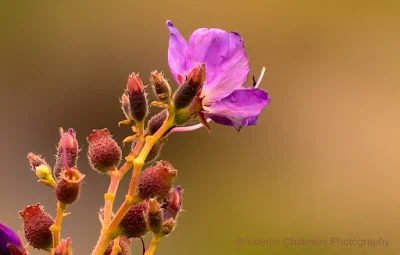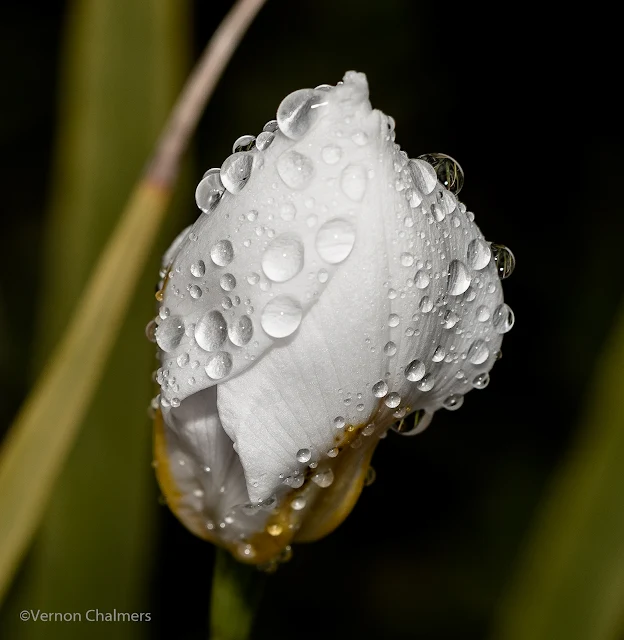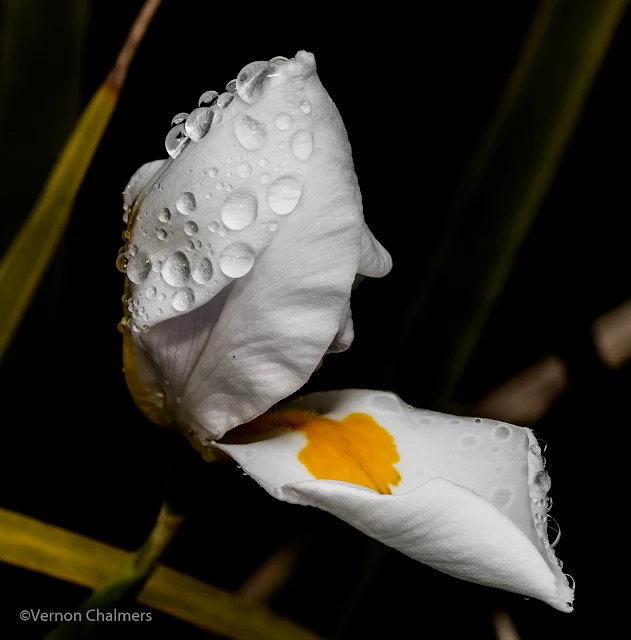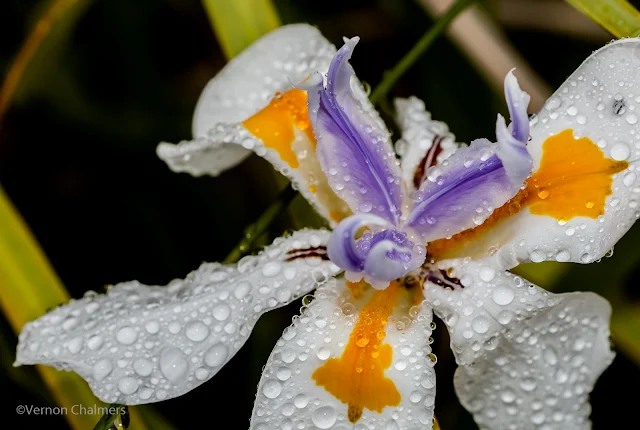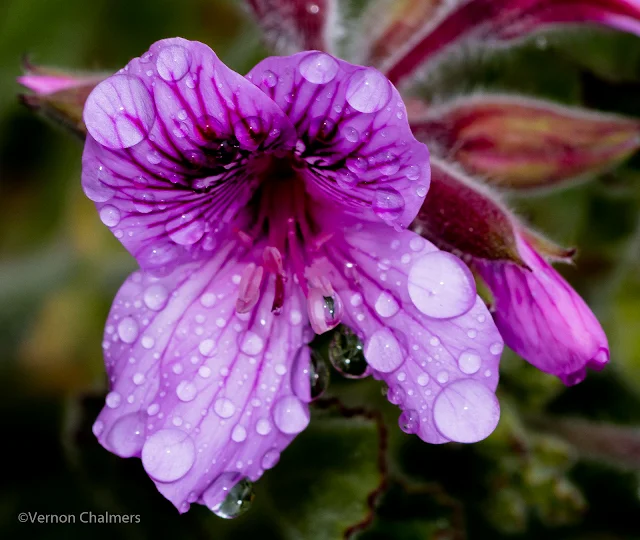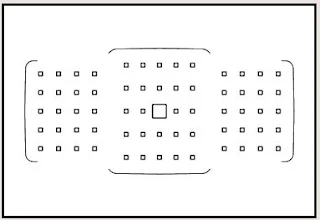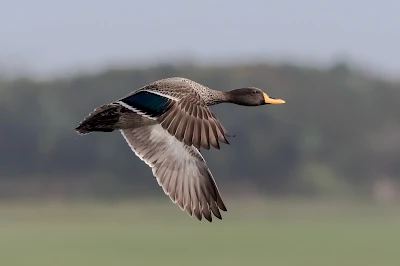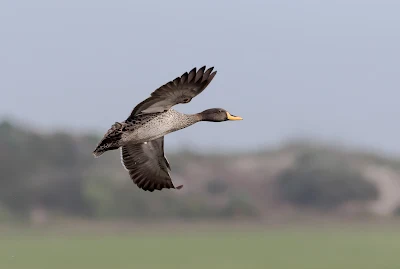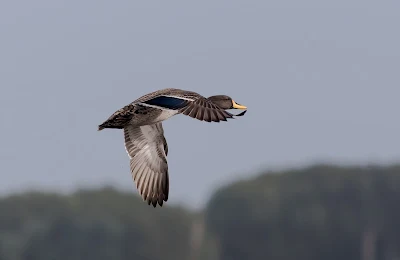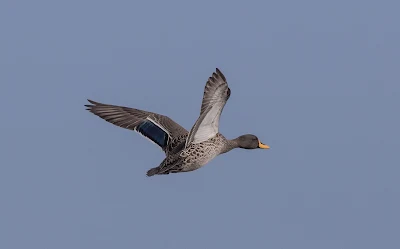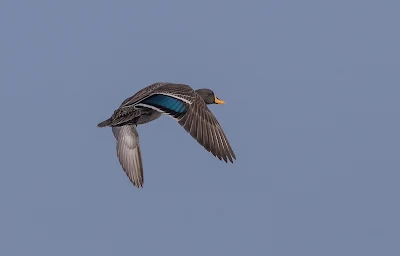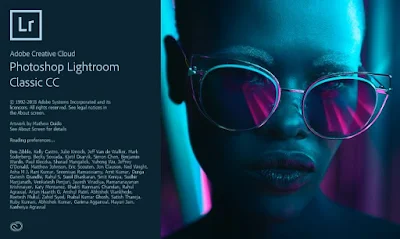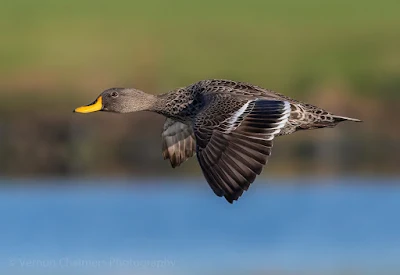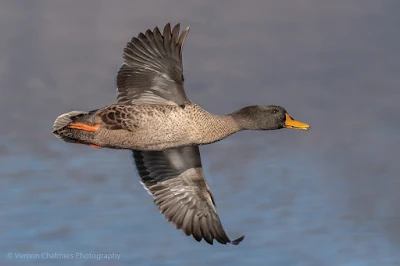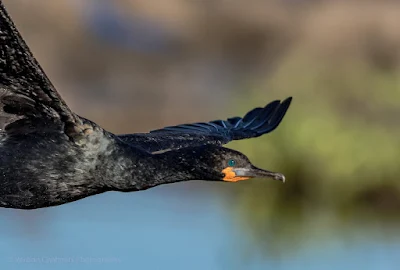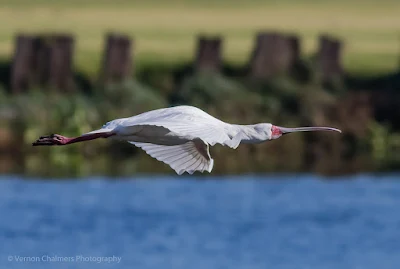New: Canon EOS R6 Field Testing>>
With Canon EOS R being Canon's first Full-Frame mirrorless body I followed the development from inception to launch, like many other photographers, with some serious anticipation.
With this interest in this new Full-Frame mirrorless strategy and subsequent product releases I was naturally exited when offered an opportunity to spend some time with the Canon EOS R and EF-EOS R mount adapter boxed kit from Canon South Africa. Initial post here.
I collected the EOS R and two EF lenses (EF 100-400mm f/4.5-5.6L IS USM and EF 70-200mm f/2.8L IS II USM lens - with extender EF 1.4x III) from Cameratek in Cape Town on a busy Friday morning. Over the weekend I familiarized myself with the EOS R body, menu system and proprietary EF-EOS R mount adapter (enabling compatibility with all current Canon EF and EF-lenses).
Canon EOS R and native RF lenses
I collected the EOS R and two EF lenses (EF 100-400mm f/4.5-5.6L IS USM and EF 70-200mm f/2.8L IS II USM lens - with extender EF 1.4x III) from Cameratek in Cape Town on a busy Friday morning. Over the weekend I familiarized myself with the EOS R body, menu system and proprietary EF-EOS R mount adapter (enabling compatibility with all current Canon EF and EF-lenses).
Canon EOS R and native RF lenses
Currently there are five RF lenses for the EOS R system, covering the 35 - 105mm focal range, with at least another five RF lenses in development covering the focal range up to 240mm.
Canon EOS R Brief Specifications
Canon EOS R out of the box impressions
Canon EOS R Brief Specifications
- 30.3 Megapixel Full-Frame CMOS Sensor / DIGIC 8 Image Processor
- RF Mount Compatible with RF Lenses and EF / EF-S Lenses
- Built-in EVF, Vari-angle Touchscreen LCD
- ISO range of 100-40,000, expandable to 102,400
- USB 3.1 in-camera charging support / Built-in Bluetooth and Wi-Fi®
- Single UHS-II SD card slot / CR3 (RAW / C-RAW) and Dual Pixel RAW Support
- Dust and weather resistant
Canon EOS R out of the box impressions
I received the evaluation body and mount adapter (and the two EF lenses / extender) well packaged. Very similar to any new Canon EOS body and / or lens. With years of experience with the Canon EOS 7D Mark II / EOS 6D the EOS R grip and ergonomics felt immediately smaller and quite different than the bigger EOS DSLRs. Over the first weekend I was a bit hesitant about the ergonomics, but after a few days in the field the grip felt quite comfortable (even when paired with the relatively large EF 100-400mm f/4.5-5.6L IS II USM with EF 1.4x extender).
The familiar Canon EOS menus worked great and the flip-out vari-angle touchscreen works very much the same as the EOS 70D / 80D and EOS 6D Mark II. I don't personally have a need for the flip-out screen but it makes functional sense for many different types of photographers requiring different creative angles.
Test settings and other default criteria
During June 2015 I did a similar First Impressions article with the Canon EOS 7D Mark II / EF 100-400mm f/4.5-5.6L IS II USM lens which I received for testing from Canon South Africa (via one of the local Canon retailers).
The familiar Canon EOS menus worked great and the flip-out vari-angle touchscreen works very much the same as the EOS 70D / 80D and EOS 6D Mark II. I don't personally have a need for the flip-out screen but it makes functional sense for many different types of photographers requiring different creative angles.
Test settings and other default criteria
During June 2015 I did a similar First Impressions article with the Canon EOS 7D Mark II / EF 100-400mm f/4.5-5.6L IS II USM lens which I received for testing from Canon South Africa (via one of the local Canon retailers).
With the Canon EOS R I followed a similar testing approach and although I opted to be as objective as possible within my personal frame of reference during testing it was without doubt based on my extensive experience with my own Canon EOS 6D (Full Frame / non-action) and Canon EOS 7D Mark II (APS-C / action).
Over the testing period I used the following, configurations and settings with the Canon EOS R and three EF lenses (I also used my own EF 24-70mm f/4L IS USM lens and EF 100mm f/2.8 USM Macro lens):
- For action shots I used Manual Mode and non-action AV Mode
- All images were captured in RAW and a few in S-RAW / M-RAW
- All action images were captured in High-Speed Continuous shooting and AI Servo
- All action / nature images were handheld and no flash used
- Canon EF-EOS R mount adapter used with all lenses
- Canon Extender EF 1.4x III only used on the EF 100-400mm f/4.5-5.6L IS II USM lens
Using the Canon EOS R in the field
I spent quite some time with the EOS R and derived my overall impressions, likes and challenges from the various outings I used the camera. Conditions were generally what was expected in Cape Town this time of the year; some sun, wind, rain and some fog - nothing unlike the normal conditions most outdoor photographers will encounter with their own cameras.
I spent quite some time with the EOS R and derived my overall impressions, likes and challenges from the various outings I used the camera. Conditions were generally what was expected in Cape Town this time of the year; some sun, wind, rain and some fog - nothing unlike the normal conditions most outdoor photographers will encounter with their own cameras.
The four main areas and genres I used the Canon EOS R with in my testing period:
- Birds in flight photography
- Perched bird photography
- Nature / flower photography
- General walk-around / tourist photography
SD cards used during my time with the EOS R
- SanDisk Extreme PRO 32GB 95MB/s SD memory Card
- SanDisk Extreme PLUS 32GB 80MB/s SD memory Card
My initial observations and experiences will be followed by more detailed stand-out features and challenges experienced with the EOS R across the listed genres / areas towards the latter part of this article.
(Click on any images to enlarge / start slide show)
(Click on any images to enlarge / start slide show)
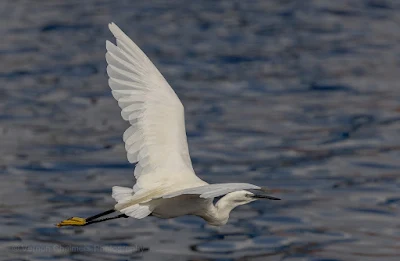 |
| Canon EOS R at 400mm (100 - 400mm lens without 1.4 Extender) |
Birds in Flight Photography Woodbridge Island
As an avid birds / birds in flight photographer and trainer this was my first couple of outings with the EOS R paired with the EF 100-400mm f/4.5-5.6L IS II lens with and without the 1.4x III extender. This was also an opportunity to test the camera in different light conditions, but mostly it was about its action performance, image quality and ISO performance at higher shutter speeds.
As an avid birds / birds in flight photographer and trainer this was my first couple of outings with the EOS R paired with the EF 100-400mm f/4.5-5.6L IS II lens with and without the 1.4x III extender. This was also an opportunity to test the camera in different light conditions, but mostly it was about its action performance, image quality and ISO performance at higher shutter speeds.
The body and lens pairing felt quite comfortable in my hands and I managed to capture +- 1200 images on the first birds in flight outing. The camera was initially slow to acquire Autofocus (AF) - considering I do most of my birds in flight photography with the EOS 7D Mark II.
Most of my birds in flight shots were from side-to-side and the EOS R was a bit slow between the individual shots. At least no shots were missed in any high-speed bursts between 5 and 8 individual shots. Although the camera was slow on acquiring initial AF, the lock-on and traction functioned seamlessly. I experienced no problems on the actual AF performance after lock-on, not even with the faster side-to-side flying birds.
The fact that the EOS R uses a mount adapter (EF-EOS R)
to pair with the EF 100-400mm f/4.5-5.6L USM II lens could
of had a slight impact on slowing down the initial acquiring of action subject as well.
Keen birds in flight photographers should be aware of this - this could potentially be a serious decision-making criterion
for action/ birds in flight photographers and I will provide additional feedback (if required). I use different cameras for different genres, but many photographers want one all-round body for action and still photography.
Contact Me for more information on the EOS R's performance / settings for birds in flight photography.
Most of my birds in flight shots were from side-to-side and the EOS R was a bit slow between the individual shots. At least no shots were missed in any high-speed bursts between 5 and 8 individual shots. Although the camera was slow on acquiring initial AF, the lock-on and traction functioned seamlessly. I experienced no problems on the actual AF performance after lock-on, not even with the faster side-to-side flying birds.
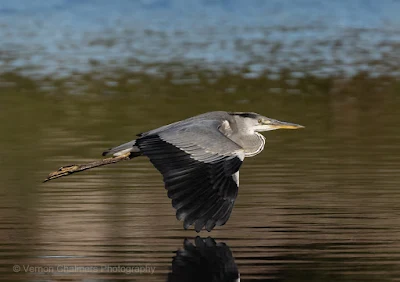 |
| Canon EOS R at 560mm (100-400mm lens with 1.4 Extender) |
to pair with the EF 100-400mm f/4.5-5.6L USM II lens could
of had a slight impact on slowing down the initial acquiring of action subject as well.
Keen birds in flight photographers should be aware of this - this could potentially be a serious decision-making criterion
for action/ birds in flight photographers and I will provide additional feedback (if required). I use different cameras for different genres, but many photographers want one all-round body for action and still photography.
Contact Me for more information on the EOS R's performance / settings for birds in flight photography.
After the first morning I made a few adjustments to the menu system in terms of the Autofocus settings and also opted for switching off the LCD completely for the entire outing the next morning. As a RAW-shooter I disabled basically everything in-camera that was not required for RAW capturing.
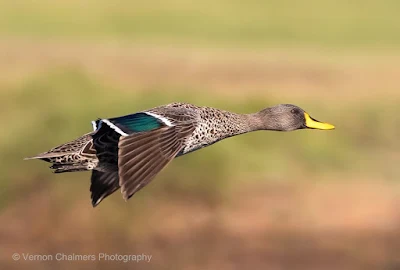 |
| Canon EOS R at 560mm (100 - 400mm lens with 1.4 Extender) |
the 100-400mm lens. Although the minimum aperture was
now only f/8 at maximum focal length registered by the camera (560mm / f/5.6 + 1.4x) I was satisfied with the overall reach, AF-performance, depth of filed and eventual image quality.
I was more in-tune with the EVF on the second day and operated the camera with and without Back-Button (BBF) AF. The ergonomics of the EOS R was a bit tight for me to continuously use BBF, but had no real impact on any of my images.
Although I was initially slightly concerned about the relatively small size of the EOS R, I started to like the smaller form-factor after a few hours in the field (compared to the EOS 7D Mark II). On day two I captured more than 1500 images and had to switch SD cards halfway through the morning as I was using a 32GB SD Card.I definitely missed the the continuity of a my two-card system in the EOS 7D Mark II (1x CF card slot and 1x SD card slot). If I had to use this body (for whatever photography) I would not be too concerned about this - using a 64GB to 128GB SD card would sort this issue out for me although I respect the fact that many enthusiast / professional photographers would prefer a 2-card system.
For all the Birds in Flight outings I used Manual Mode with Auto-ISO (the way I shoot with all my cameras) and for most of the time the EOS R selected ISO's were well below ISO 1250 - the maximum I would use with the EOS 7D Mark II.
AF Mode Selection used:
For the majority of shots I used Zone AF and Large Zone AF - which I found worked quite well for small and larger birds in flight. Lens IS on (and from time to time I used it with IS off as well).
Exposure settings used:
Manual Mode: f/5.6 - f/8 / Auto-ISO 250 - 1250 / Shutter Speeds 1/3200s - 1/4000s
 |
| Canon EOS R at ISO 500 / 560 mm (with 1.4x Extender) |
Perched Bird Photography Woodbridge Island
As I would always do, when there is an opportunity to capture perched birds, I would not change much in the camera settings to get a few perched birds into the in-flight mix.
When there is time I would simply adjust the camera from Manual Mode to Aperture Priority (Av) Mode and do AF adjustments from one of the larger zones to a smaller AF area (i.e. 1-point AF, Expanded AF Area or Expand AF area: Around).
As with birds in flight I used AI Servo AF Mode for all the perched birds. The camera performed really well in low light with ISO well below 800.
The grey heron was captured just after sunrise on one of the birds in flight mornings (with the 1.4x Extender) and I was quite surprised with the Auto-ISO 500 reading (in Av Mode).
During the first morning I captured a few perched birds with the bare 100-400mm lens at 400mm and here the Av Mode setting provided respected Auto-ISO 100.
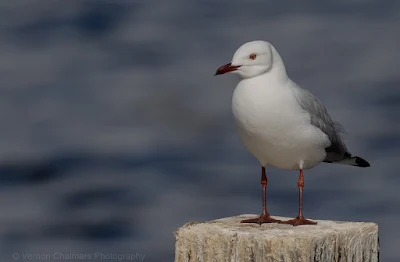 |
| Canon EOS R at ISO 100 / 400mm (without 1.4x Extender) |
In One Shot Mode (still non-continuous burst shots) there are no AF or shutter delays and the EOS R perform well on par with both my EOS 6D and 7D Mark II in similar conditions albeit at one to two stops ISO beter and substantial opportunity for tight cropping while still retaining very good image quality.
Towards the conclusion I will also discuss the CR3 RAW files, it sizes and Lightroom post-processing requirements.
AF Mode Selection used:
For the perched bird shots I used the smaller AF areas. Toggling between the different AF-areas are quick and operates very much the same as most modern Canon enthusiast and professional APS-C and Full-Frame DSLRs.
Exposure settings used:
Aperture Priority (Av) Mode: f/5.6 - f/8 / Auto-ISO 100 - 500 / Shutter Speeds 1/400s - 1/800s
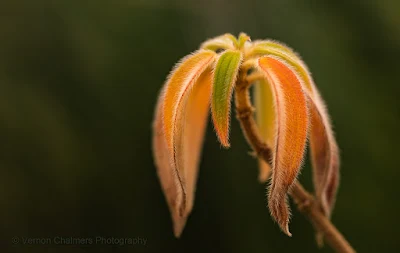 |
| Canon EOS R at ISO 100 / 102 mm (f/2.8 / IS on and Handheld) |
Kirstenbosch National Botanic Garden
For the outing to Kirstenbosch I used the Canon EF 70-200mm f/2.8L IS II USM lens for nature and small bird photography.
For the outing to Kirstenbosch I used the Canon EF 70-200mm f/2.8L IS II USM lens for nature and small bird photography.
I also used the same lens with and without the 1.4x III extender for close-up photography around my training studio in Milnerton.
We left for Kirstenbosch garden on a sunny Monday morning and apart from the busloads full of international tourists there was not that many colourful flowers (for this time of year) to capture. All in all a photographers dream for fauna and flora in the the Western Cape.
I've setup the EOS R very much the same as I would do with the EOS 6D: Av mode, One Shot AF and Auto-ISO. The Canon EF 70-200mm f/2.8 IS II USM lens (without the 1.4x extender) worked a charm on the EOS R. Fast and silent AF with pin-sharp images across the 70-200mm focal range.
 |
| Canon EOS R at ISO 100 / 200mm (f/4 / IS on and Handheld) |
While I was walking around the different gardens I realize that the EOS R would pair very well with any of the modern Canon 70-200mm f/4L / f/2,8L lenses with the latter being a wedding photographer's staple in terms of image quality, focal range and just the overall functionality of this particular EOS / EF lens combination.
For most of the morning there was no birds and suddenly while photographing flowers this little sun bird arrived.
With erratic and fast movements I was a little ill-prepared for his presence, but the EOS R with the 70-200mm coped very well - fortunately by this time I had switched to AI Servo and fast continuous shoot mode, but still in Av mode.
AF Mode Selection used:
For the Kirstenbosch Garden nature and bird shots I used the smaller AF areas.
Exposure settings used:
Aperture Priority (Av) Mode: f/2.8 - f/11 / Auto-ISO 100 - 400 / Shutter Speeds 1/400s - 1/640s
V&A Waterfront, Cape Town
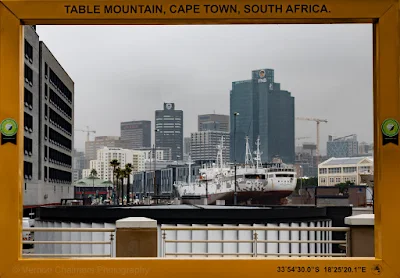 |
| Canon EOS R at ISO 200 / 53mm (f/11 / IS on and Handheld) |
Being about the only 'tourist' with a camera out and about I used the opportunity for some low light shooting.
The outing to the V&A Waterfront was the most challenging in terms of adverse weather conditions and just the most appalling light.
Wasn't it for meeting one of my friends for coffee later I seriously considered driving back to Milnerton and coming back the next morning. I was the only person walking around outside with a camera.
Wasn't it for meeting one of my friends for coffee later I seriously considered driving back to Milnerton and coming back the next morning. I was the only person walking around outside with a camera.
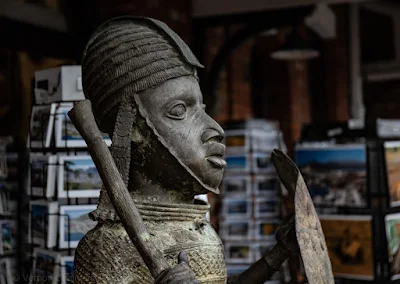 |
| Canon EOS R at ISO 250 / 70mm (f/4 / IS on and Handheld) |
I'm glad I stayed as I grabbed a few shots with the EOS R and my EF 24-70mm f/4L IS USM lens and was really pleased how the camera performed in the appalling and low light conditions.
The Auto-ISO was at least one to two stops better than my EOS 6D (in similar conditions). I was quite surprised to see Auto-ISO reading for not higher then 400 for all the images I captured around the outside of Waterfront. Inside it went up to ISO 5000 which still processed very well in Adobe Lightroom.
AF Mode Selection used:
For the V& Waterfront shots I used the smaller Large Zone AF: Vertical and Large Zone AF; Horizontal.
Exposure settings used (for outside):
Aperture Priority (Av) Mode: f/2.8 - f/11 / Auto-ISO 100 - 400 / Shutter Speeds 1/400s - 1/640s
Canon EOS R and Speedlite Flash Compatibility
As with all other Canon EOS Full-Frame cameras the Canon EOS R does not have an built-in pop-up flash, but works with Canon Speedlite and compatible flag units, I briefly tested the EOS R's compatibility with two of my Canon Speedlites with no problems (in ETTL II or Manual Modes):
Canon EOS R and Speedlite Flash Compatibility
As with all other Canon EOS Full-Frame cameras the Canon EOS R does not have an built-in pop-up flash, but works with Canon Speedlite and compatible flag units, I briefly tested the EOS R's compatibility with two of my Canon Speedlites with no problems (in ETTL II or Manual Modes):
- Canon Macro Ring Lite MR-14EX II flash
- Canon Speedlite 430 EX III-RT flash
My top stand-out features of the Canon EOS R
My inherent frame of reference during my time with the EOS R was my Canon EOS 6D (Full-Frame) and EOS 7D Mark II (APS-C). With mirrorless there is an expectation that the image quality will be superior (and a few other advantages) than the traditional DSLR.
In the relatively limited time I had with the EOS R the following are my stand-out features in this well-packages first EOS Full-Frame mirrorless camera from Canon:
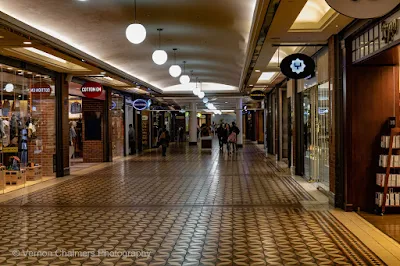 |
| Canon EOS R at ISO 5000 / 55mm (f/11 / IS on and Handheld) |
Low Light Capability / ISO Performance
For a number of years now I have used the Canon EOS 6D for most of my low light work and the 35mm Full-Frame sensor delivers again and again. With its high ISO performance I hardly bothered looking any other Canon Full-Frame body for my work.
Looking at the one to two stops better ISO performance that the EOS R delivered (during my filed evaluation period and no scientific testing) I was very pleased to see how this camera delivers relatively low Auto-ISOs in low light where I expected it to be much higher. At the V&A Waterfront and elsewhere (in the outdoors) it repeatedly delivered well below ISO 400.
The image on the right here was captured inside the V&A Waterfront at ISO 5000 (handheld in AV mode at f/11). What makes this image great for me is the fact that I have done nothing to it apart from converting it from RAW to JPG - it is Straight Out Of Camera (SOOC).
I quite like the dynamic range, colours and the minimum work I have to do in post-processing with the majority of shots I captured during the testing period.
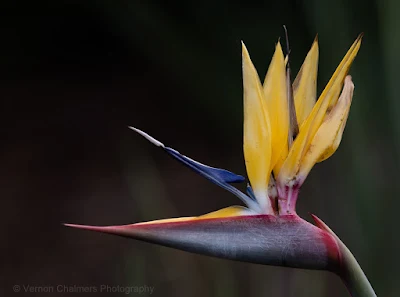 |
| Canon EOS R at ISO 100 / 200mm (f/4 / IS on Handheld) |
Image Quality
The EOS R (with the EF lenses I used) rendered some of best image quality (and colour renditions) that I have personally worked with in the field and seen from other enthusiast and professional photographers in my training studio.
The EOS R (with the EF lenses I used) rendered some of best image quality (and colour renditions) that I have personally worked with in the field and seen from other enthusiast and professional photographers in my training studio.
I'm sure the EOS R will perform as good or even even better when paired with its native RF lenses.
The image here was from the outing to the V&A Waterfront - handheld from the outside into one of the tourist shops in a low light environment.
I've done some work on the image (cropping and some sharpening), but all in all spent less than 5 minutes with the post-processing
Cropability
Cropability
 |
| Uncropped: At 400mm with the EF 100-400mm f/4.5-5.6L IS II USM Lens |
The (extreme) cropability of the EOS R is very good in my opinion. I have no problem cropping my birds in flight images with the EOS 7D Mark II and had very good results with the EOS 80D as well.
I rely on cropping extensively for birds in flight and perched bird photography and over the next few days will prepare and share more examples with the EOS R in term of cropping the following genres:
- Birds in Flight
- Perched birds
- Macro and close-ups
The EOS R's 30.3 MP sensor and pixel density provides generous opportunity for cropping and retaining relatively high image quality. Cropping is important not just for compositional purposes (minor), but also on the extreme side for bringing an entire in-focus subject closer for the viewer. The disadvantage of this approach it can be quite time consuming to bring some of the detail back, but I cant see this as much of an issue with the capabilities of the EOS R.
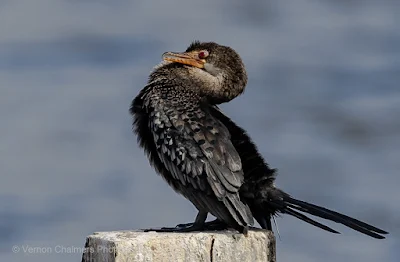 |
| Cropped: At 400mm with the EF 100-400mm f/4.5-5.6L IS II USM Lens |
Above is an example of an uncropped SOOC cormorant perched in the Diep River / Woodbridge Island. Image one is the uncropped image and then the crropped and post-processed image I worked with in Adobe Lightroom.
Here is a few examples I have done a few years ago with the Canon EOS 7D Mark II in terms of cropping and post-processing.
I'm of opinion now that the EOS R delivers even better results (from my own frame of reference at more less the same distances).
Some of the other features I like about the EOS R
Compatible with EF and EF-S lenses
This is quite high on my list of likes. The compatibility with all current EF and EF-S lenses is a major feature and will be for many enthusiast and professional photographers with these lenses. It could very well be one of Canon's Unique Selling Points (USP's) down the line for photographers buying into the EOS system due to their current selection of EF / EF-S lenses. It makes a lot of business and consumer sense for me.
I did not have any EF-S lenses to test on the Canon EOS R, but are of opinion they will work just as well as the EF lenses that I have worked with. I have used my EF 100mm f/2.8 USM Macro lens on the EOS R and it performed exactly the same as when paired with the EOS 6D.
Battery / charger compatibility
The Canon EOS R uses the same Canon LP-E6(N) battery and charger than most current enthusiast and professional Canon DSLR's. During my testing period it worked with no problem with the batteries from my EOS 6D / EOS 7D Mark II and EOS 70D.
During testing I never had to change a battery while in the field. On one occasion I shot +- 1500 images and the battery still indicated a bar or two. For achieving this I had the LCD completely turned off and only viewed the images in the studio afterwords.
Challenges while working with the Canon EOS R
Challenges while working with the Canon EOS R
I call them challenges as both of them are manageable and both will test even the experienced photographer's patience. For some photographers they will probably disappear faster than for others. For some photographers neither will be an issue - all will depend on application and a few additional resources.
I experienced both challenges with some frustration, but happy to report that with planning, technique and experience overcome both to a big extent.
EVF / Shutter lag
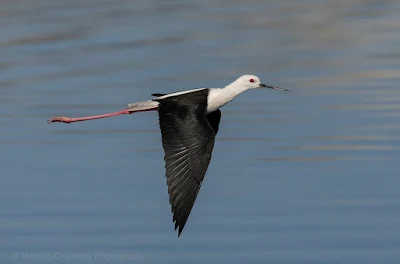 |
| Canon EOS R Action - Black-winged Stilt flying at pace |
During the birds in flight photography section of this article I mentioned the delay of (1) getting AF and (2) once AF is achieved the slight stuttering between continuous shooting of images
Immediately apparent for me was the slight shutter lag (during pre-focus in Autofocus (AF) Mode - almost like a brief blackout period between individual images that I experienced with the fast flying birds.
My initial focus and shots were not great as I tried to come to terms with the electronic view finder (EVF) and the slight hesitation / stuttering between shots (in continuous mode).
The relative slowish 5 fps frame rate (when compared to the EOS 7D Mark II's 10 fps) was no concern as I'm also used to the Canon EOS 6D that is only 4.5 fps, but still produces fairly good results (when paired with my EF 400mm f/5.6L USM lens).
Compounding this problem (in my opinion) is the fact that I used the EOS R mount adapter to use the EF 100-400mm f/4.5-5.6L IS II USM lens with the EOS R.
Between day one and day two I had this problem more / less under control by means of a longer awareness and anticipation of a bird flying towards me. I'm use to the EOS 7D Mark II's almost instantaneous pre-focus and AF capabilities and it took me a few days to adjust this experience to a more workable solution.
Although it was a bit harder work to get the images I wanted I was just as satisfied with my birds in flight images coming from the EOS R when compared to the EOS 7D Mark II.
My initial focus and shots were not great as I tried to come to terms with the electronic view finder (EVF) and the slight hesitation / stuttering between shots (in continuous mode).
The relative slowish 5 fps frame rate (when compared to the EOS 7D Mark II's 10 fps) was no concern as I'm also used to the Canon EOS 6D that is only 4.5 fps, but still produces fairly good results (when paired with my EF 400mm f/5.6L USM lens).
Compounding this problem (in my opinion) is the fact that I used the EOS R mount adapter to use the EF 100-400mm f/4.5-5.6L IS II USM lens with the EOS R.
Between day one and day two I had this problem more / less under control by means of a longer awareness and anticipation of a bird flying towards me. I'm use to the EOS 7D Mark II's almost instantaneous pre-focus and AF capabilities and it took me a few days to adjust this experience to a more workable solution.
Although it was a bit harder work to get the images I wanted I was just as satisfied with my birds in flight images coming from the EOS R when compared to the EOS 7D Mark II.
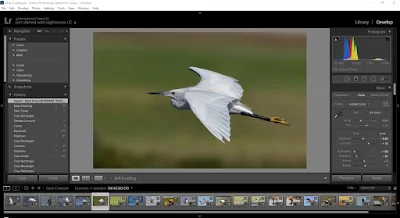 |
| Working with Canon EOS R CR3 RAW Files in Adobe Lightroom 8.2 |
Before I collected the EOS R from Camerak I updated both my Canon Digital Photo Professional and Adobe Lightroom to the latest versions to ensure compatibility with the CR3 files.
Prospective buyers of the Canon EOS R should take note of this. A few updates will have you sorted in no time.
Canon Digital Photo Professional (DPP) 4 users: CR3 files will only work with DPP 4.10. This is a free upgrade from Canon.
For Adobe Lightroom Users: The updated Adobe Lightroom 8.2 (released in Feb 2019) is fully compatible with EOS R.
More information on processing Canon CR3 RAW files with Canon DPP or Lightroom
Transferring images from camera to computer
I used the both my Lexar Professional Dual-Slot USB 3.0 and Transcend TS-RDF8K USB 3.0 Multi Card Readers for transferring CR3 images without any issues.
 |
| Canon EOS R at ISO 1250 / 560mm (with 1.4x Extender) |
The EOS R's 30.3 MP sensor generated RAW that was between 29MB and 41MB in file size. Without the proper USB 3 download tools (USB 3 transfer cable is boxed with camera) and sufficient RAM memory (and a low performance CPU in your computer) the downloads and processing will drive photographer nuts.
Not so much for the landscape photographer, but definitely for the fast action / birds in flight photographer downloading more than a thousand images at a time.
Recommended minimum specifications (from an Intel / Windows PC perspective)
- Intel Core i5 to i7 CPU (Fourth Generation or higher)
- 8 to 16 GB DDR 3 or DDR 4 RAM Memory
- Optional: 2 GB to 4 GB Graphics Processing Card (GPU)
- 1 Terabyte (TB) Hard Disk Drive / Optional: 2 to 4 TB Removable Storage
 |
| Canon EOS R with EF 24-70mm f/4L USM lens at f/8 / ISO 320 / 57mm |
Canon EOS R Strategy
Canon EOS T\R entered the market with a lot of anticipation and expectations from Canon enthusiast and professional photographers alike.
The Canon EOS R was a relatively late entry into the Full Frame interchangeable lens mirrorless camera market. The message I repeatedly hear from Canon globally is that there is and will be a lot of future attention towards the EOS R System. So by many standards the EOS R System is still in its infancy, but (will be) built on a strong reputation and existing EOS DSLR framework and functionality.
After spending a few weeks with the EOS R I am optimistic and fairly convinced that Canon will deploy substantial future resources in the development of the R System (and possibly the EOS M as well - the current Canon APS-C mirrorless range).
Current EOS R functionally
This is what most photographers around me want to know. How does it shoot? Show me images... What is the image quality like and what about AF performance? Is it fast enough for Birds in Flight and other action? Lost of questions and on a relatively small personal footprint here I hope that I can contribute to answering some of these decision-making questions with my EOS R first impressions article.
The EOS R is a great performer, a relatively small form-factor Canon full-frame mirrorless camera with some excellent features.
The all-round landscape and wildlife enthusiast / professional photographer should get substantial value with the EOS R System in terms of modern communication features, image quality and very good low light / low noise performance.
With its native RF lenses and the compatibility with the full range of EF / EF-S lenses it will be more than a worthy new EOS upgrade and / or replacement body.
The all-round landscape and wildlife enthusiast / professional photographer should get substantial value with the EOS R System in terms of modern communication features, image quality and very good low light / low noise performance.
With its native RF lenses and the compatibility with the full range of EF / EF-S lenses it will be more than a worthy new EOS upgrade and / or replacement body.
For action photographers
The current EOS R is in my opinion not ready to replace the Canon EOS 7D Mark II, EOS 5D Mark IV to shoot dedicated (only) action / birds in flight to meet many (almost) instant AF-focusing or continuous burst mode expectations.
I don't believe this was ever Canon's objective with Canon EOS R - not the current bodies any way. However, for the occasional action and / or birds in flight the the EOS R should deliver super results.
Latest Canon R / RP Mirrorless Full Frame Firmware Updates
More Information about Canon EOS R from Canon South Africa
Canon EOS 7D Mark II First Impressions / Test Shoot
I don't believe this was ever Canon's objective with Canon EOS R - not the current bodies any way. However, for the occasional action and / or birds in flight the the EOS R should deliver super results.
Latest Canon R / RP Mirrorless Full Frame Firmware Updates
More Information about Canon EOS R from Canon South Africa
Canon EOS 7D Mark II First Impressions / Test Shoot
Canon EOS 80D First Impressions / Test Shoot
 |
| Canon EOS R at 560mm / ISO 640 (EF 100-400mm f/4.5-5.6L IS II USM lens with 1.4 Extender) Canon Digital Photo Professional 4.10.50 For Windows | Mac View |
